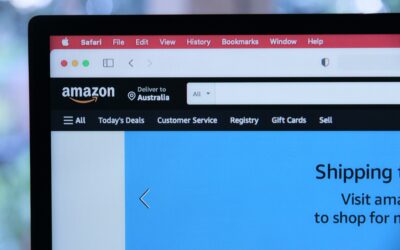What is it?
Digital signage videos are displayed on LED, projection or LCD screens installed where crowds can easily view them. This type of video messaging is often used at churches, conferences, sporting events, restaurants, hotel lobbies, museums and public spaces.
Separate videos can be combined into one digital file and stored on a computer, using software to display each video at a predetermined time. For instance, a restaurant might use digital video signage to display lunch specials from 11 a..m. until 2 p.m., then transition to a video of happy hour promotions in late afternoon, followed by a video of nightly entree offerings during the dinner hours.
The technology for digital signage videos has evolved tremendously from the days of scrolling words in a red dot matrix. Today you can display anything you can imagine with multimedia content and present your message in eye-popping color with crystal-clear sound on a high-definition screen.
We created the media for the digital signage for Prestonwood Church in the new kids area.
Need a new mattress? Serta hopes to sell one to you in this digital signage video on display at a mattress store.
Here’s a digital signage video used in an automotive repair shop to explain common repairs, so customers can better understand the work they are paying for — and the employee working at the customer service counter doesn’t have to spend quite so much time explaining the same basic repairs, over and over, day after day.
When/Where to use.
Digital signage is common along highway corridors through cities where stoplights pause traffic long enough for potential customers to engage with your message. Restaurants and popular attractions often set up digital signage to draw crowds. Indoors, digital signage can be used in restaurants to promote nightly specials, recommend desserts, show off fancy cocktails — anything the business wants to highlight in front of customers. Signage is particularly effective in reception rooms and waiting areas, where there’s a captive audience. It’s also used for guiding people through large facilities such as hospitals..
For the back office, digital signage can be deployed in training areas and break rooms, for example. Perhaps you want to display a motivational message to employees or deliver a training program to new hires without the cost of printing paper copies or having a staff member tied up all day in the training room. Digital signage is a solution.
Why use it.
Our eyes are naturally drawn to movement. We are accustomed to processing visual information. Much of this psychological training is a result of the Internet, where fully one-third of all online activity now involves watching videos. If you want to engage an audience inside your place of business, or persuade them to pull off the highway and into your parking lot, digital signage videos are the way to do it.
Significantly, the digital signage market is expected to grow from $15 billion to over $24 billion within the next year. In practical terms what this means is the popularity of digital signage is catching fire. Your competitors are probably exploring ways to deploy digital signage if they haven’t already.
There’s another factor to consider. If your business operates with a reception area or waiting room, you are also competing with your customers’ smartphones for their attention. No matter how attractive, a printed sign hanging on your wall is not going to command the same focus you will get from digital signage.
How to use and Analyse/Measure
Digital signage videos are loaded onto a content management server, a setup that can be complex — with multiple screens in different locations timed to play varying video content throughout the day — or a simple HDMI cable connection between a laptop and a flatscreen television. You can probably set up simple displays yourself, although programming multiple videos and learning the software that helps you track data to measure return on investment will probably require professional assistance.
Features
Digital signage can be deployed in a variety of ways with different features. Choosing the best features depends on your goals for the video. In addition to images, you can include text to provide specifics about your offer. You may recall older digital signage that used scrolling text from right to left. With modern technology, your titles and text can swoop across the screen, blink and flash, fade in and out, almost any movement you can think of to draw viewers’ attention.
You may wish to promote a product or service. Customer testimonials, inspirational quotes, commercials and your latest press coverage are additional options.
Internal communications might include reminders of upcoming company events, announcements such as healthcare plans and paid leave policies, birthday greetings, news of employee achievements, recognition and awards, and motivational messaging.
In hospitality industries such as hotels and restaurants, digital signage can promote mouthwatering video of the entrees of the day, hotel services and amenities such as a spa, pool or exercise room, as well as shuttle service, and a rundown of nearby attractions.
Real estate offices can highlight property listings, mortgage rates, the agent of the month and additional services that set you apart from competitors.
Common examples of digital signage videos include:
Product information, advertising and promotion – This video features pricing, images of the product in use or being enjoyed. Often featured in the foyer or waiting area of restaurants to promote nightly specials, new drinks, desserts, etc. Alternatively, the video might display entertainment content related to the business so customers have something to engage them while waiting to be served.
Outdoor displays — Used at sports stadiums, concert arenas, large public spaces and along heavily travelled highway corridors to draw customers off the road and into a business.
Public information – Government buildings and large corporate offices often use digital signage videos to display office directories and a map of the facility.
Internal messaging — Companies may set up digital signage to relay health & safety information, provide training and display reminders of upcoming company events.
Enhancing the customer experience — this type of digital signage is used to explain exhibits in art galleries, museums and other tourist attractions.
Brand building – This variety of digital signage is typically displayed in a store to promote a particular brand or product line.
Process to create
All great promotional videos begin with a concept, an idea for the presentation. Ask yourself who the audience will be for the digital signage, then tailor the messaging to that audience. A slideshow of static images is okay, but motion is better for grabbing and holding attention.
Things to consider:
- How many screens do you need to install?
- What’s the timeline for launching the digital signage?
- What’s your content strategy?
- What’s your budget?
There are several components to a digital signage video installation:
Video Content – a high-definition production that targets a specific audience and persuades them to pursue a desired outcome. You may need several videos to display throughout the day for different needs.
Hardware – The physical components necessary to display the video, including screens and mounting brackets, media players or a computer to store the video, and networking components to connect everything.
Software – The content management system that runs the video and collects data.
Connection – The manner in which digital signs are linked to the content management system, either by Wi-Fi, physical cables or mobile technology.
Installation – Setting up the digital signage system so that it is operational.
Your video production company will work with you to develop a great concept for the video that fulfills your vision and needs, while working within your budget.
Devote the time you need to create a good plan with thorough pre-production, which is much less expensive that making dramatic changes during the actual production of a video.
There are several ways to set up digital signage systems. With the simplest, you can run everything from a laptop connected to the screen. Multiple screens displaying different messages throughout the day require more complex installations. You may find it easier to store videos in the cloud and display them on your monitors using Wi-Fi or mobile technology.
Though it may seem confusing at first, your video production company will get your digital signage up and running, and show you how to maintain the system, crunch the data and produce actionable reports you can use to make more profitable business decisions. The learning curve is not steep.
Costs
Production costs for a Digital Signage video typically start at 5,000. Here are some of the factors that affect production costs:
- Securing locations (this won’t be a factor if the production occurs on your company property or exclusively involves close-up and medium shots of a product, which can be captured in a studio)
- Hiring acting talent.
- Wardrobe, props and any other items needed to present the message effectively
- Creating extensive computer graphics and animations
- Licensing music
In addition, you’ll need to invest in a high-definition monitor (a flat screen HD television) to display the digital signage as well as a dedicated laptop or PC from which to store and run the content. Computer equipment and special software is also needed if you plan to track the effectiveness of digital signage, such as A/B testing where you compare displays of different messages to sales figures. For instance, if a restaurant is running a special on a particular style of beer and uses digital signage to promote it, the manager needs to be able to check the nightly sales figures against the messages being displayed. That way, it’s possible to determine which message makes a bigger difference in sales — and by how much.
Production time
Most of the time devoted to creating your digital signage will likely be spent on conceptualization — coming up with the best ideas to convey your messaging in visual terms. Outdoor signage to attract passing motorists needs to be highly visible, with short, punchy messaging, given the limited amount of time you have to grab their attention. Indoor digital signage can include both visuals and animated text for a more dynamic and detailed explanation of the offering.
Four to six weeks is the average production time for digital signage videos. Once loaded on your content management server, the videos can be easily programmed to display on your chosen schedule.
Benefits
Digital signage videos are automated, meaning you can set them up and let them roll. Video clips are programmed to replay — you can even set up a playlist to display several videos in any desired sequence at any time interval. To use the restaurant example again, a digital signage video of that day’s lunch special can be displayed just before the crowd arrives until lunch service concludes in the afternoon, when the signage switches over to the nightly dinner special.
You don’t need to count on your employees to memorize a new script every day as they interact with your customers. The digital signage video displays your messaging precisely the way you want, every time.
Digital signage is also a great way to engage customers while they are waiting, whether at the doctor’s office or a fine steakhouse. The messaging gives them something to look at while they wait. Just as important, digital signage videos are a powerful way to compete for attention when almost all of your customers have smartphones to engage them in a waiting room. To connect with the modern customer, you’ve got to match your marketing technology with the technology they’re toting around in their pockets. In the escalating war for eyeballs, digital signage videos give you an edge over competitors who nail static signs to the wall. Your business is seen as technologically savvy, cutting edge, and you’re giving customers what they want.
Testimonials
“One of the best, most on-point creative groups you can find. On top of that they are on-time & on-budget! With great communication along the way they make the production process enjoyable and exciting!”
— Everett Bowes, WeTalkSocial
“Reliability and delivery. Best creative service around. Not a lot of companies out there that I trust like I do them.”
— Mike Crow, Orthofix
“Excellent to work with. Very creative and talented. Creative solutions. Delivered in a timely manner.”
— Brian Czock, SonLight Productions




